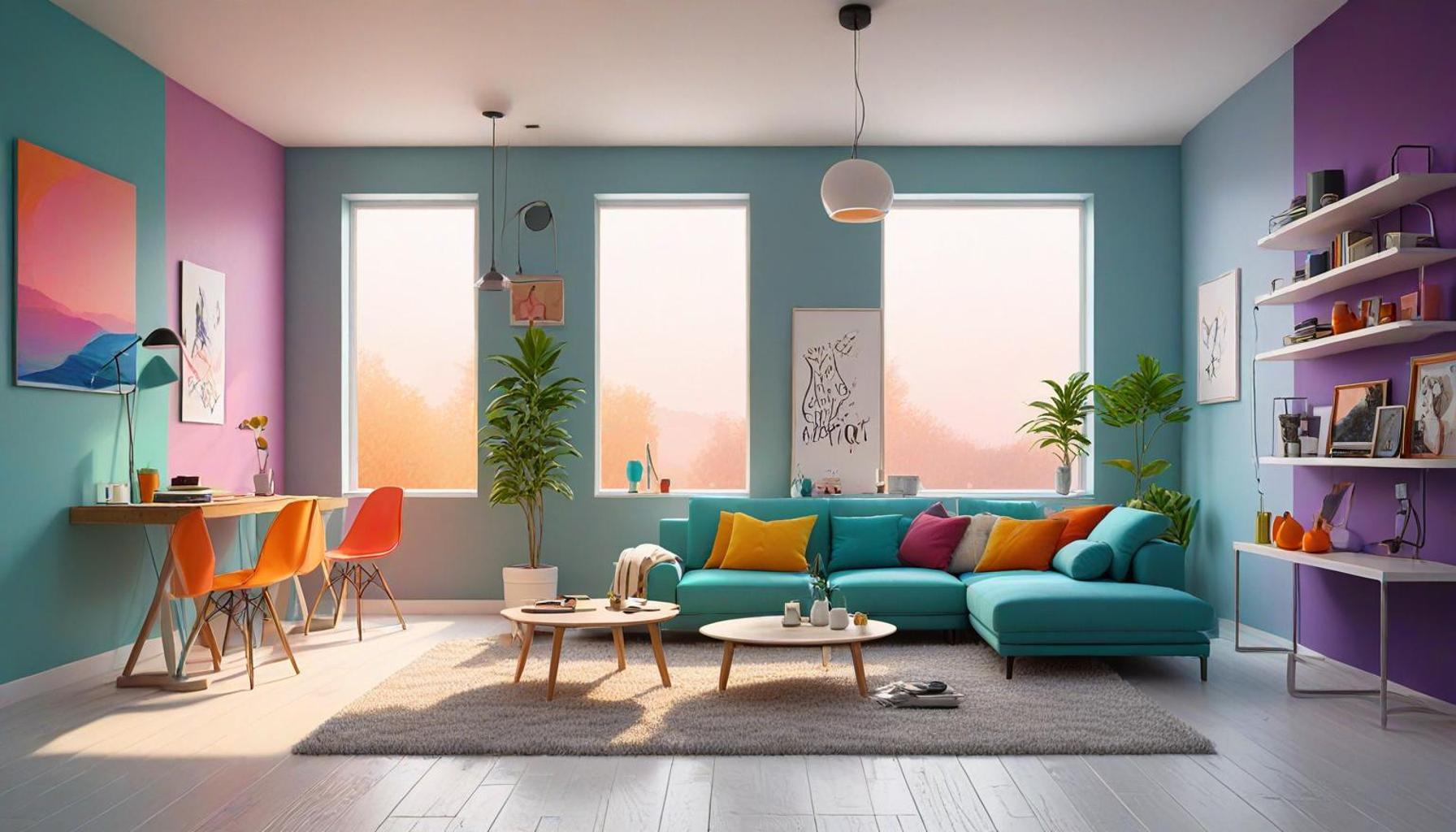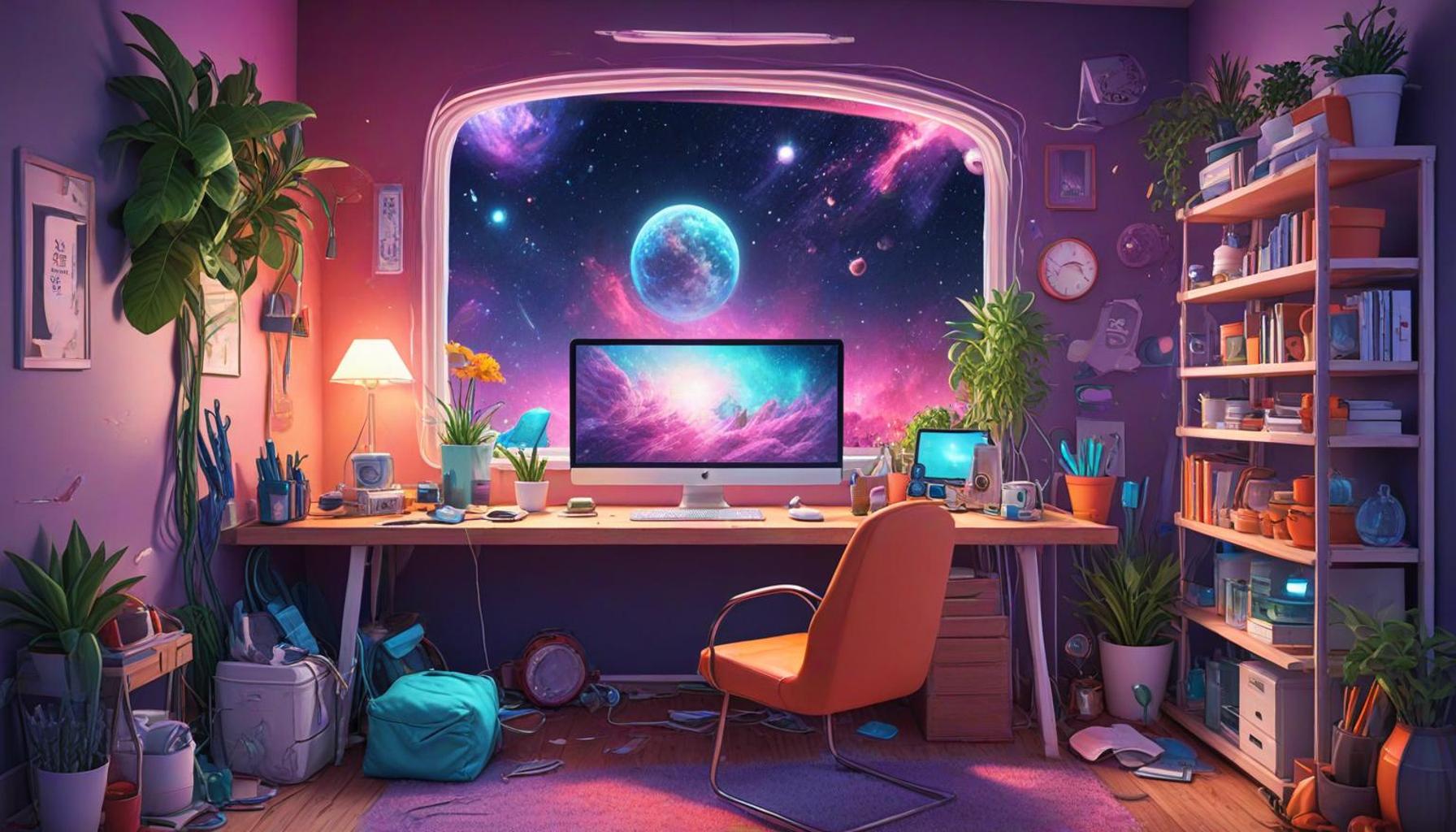How Color and Lighting Choices Can Maximize the Sense of Space in Minimalist Homes

Creating an Illusion of Space
In the realm of minimalist home design, the selection of colors, materials, and lighting serves a pivotal role in shaping how a space is perceived. By purposefully orchestrating these elements, designers and homeowners alike can create an environment that feels expansive and inviting rather than cramped and oversaturated. The craft of maximizing space transcends mere aesthetics; it is fundamentally intertwined with the principles of visual perception and how our brains interpret our surroundings.
Understanding Key Concepts
To foster a sense of openness, it is essential to grasp a few key concepts that significantly influence the overall ambience of a room. Here is a breakdown of crucial elements to consider:
- Color Palette: Utilizing light or neutral colors on walls and furniture can reflect natural light, making a room feel more open. Shades like soft whites, pastel blues, or gentle grays create an airy atmosphere. For instance, painting walls in a delicate shade of off-white can enhance the feel of spaciousness by bouncing light around the room.
- Lighting Techniques: The incorporation of natural light through large windows or skylights can dramatically brighten a space, fostering warmth and depth. Layered lighting—combining ambient, task, and accent lighting—allows for varied illumination that can highlight focal points, such as artwork or architectural features. Installing floor lamps with shades that direct light upward can offer a cozy feel while avoiding harsh shadows.
- Contrast and Texture: The careful use of contrasting elements and textures can add visual interest without overwhelming the space. For example, pairing a smooth, light-colored sofa with a textured, deep-hued rug can create a dynamic yet balanced look. This approach prevents monotony while keeping the overall design clean and streamlined.
Minimalist homes embrace a philosophy of simplicity, but this does not equate to a lack of sophistication. In fact, the right color choices can infuse a space with vibrancy, while intentional lighting can accentuate the architectural nuances of a room. Consider the thoughtful placement of mirrors; they can amplify natural light and create a perception of additional space, serving both functional and decorative purposes.
Through this exploration of color and light, individuals can transform even the smallest homes into tranquil retreats that feel designed to invite rather than confine. As you embark on your minimalist journey, remember that every choice—large or small—directly influences how your space is experienced.
DISCOVER MORE: Click here to learn effective organization tips
Finding Balance: Color and Light Interplay
The marriage of color and lighting within a minimalist space is not simply a matter of personal preference; it is a strategic approach that hinges on psychological principles and environmental design. Understanding how these elements interact can lead to an enhanced perception of spatial dimensions, setting the stage for a serene and uncluttered living experience. When executed thoughtfully, the right choices in color and light can redefine how we navigate and feel in our homes.
Color Selection: The Foundation of Light Reflection
In minimalist design, a carefully curated color palette is fundamental to establishing a calm and spacious atmosphere. Lighter hues such as whites, creams, and soft pastels amplify the effects of natural light, whereas darker colors can absorb it, making a space feel more confined. When choosing a color scheme, consider the following:
- Warm vs. Cool Tones: While warm tones can evoke a sense of coziness, they may also make a space feel smaller. In contrast, cool tones—like soft blues and greens—can create an illusion of openness, mimicking the expansive sky and nature.
- Consistency is Key: Consistent color usage throughout different spaces can create a seamless flow that tricks the eye into perceiving more area. For instance, continuing the same wall color from the living room into adjacent hallways can unify the overall aesthetics and enhance spatial perception.
- Accent Features: While maintaining a predominantly light color scheme, incorporating occasional accent pieces—such as a bold, vibrant artwork or a uniquely colored chair—can add personality without compromising the room’s sense of spaciousness.
Illuminating Spaces: The Role of Lighting Design
Lighting plays a crucial role in not just enhancing the aesthetic but also in shaping how space is experienced. Utilizing layered lighting techniques can drastically affect the mood and perception of a room:
- Natural Lighting: Maximizing natural light through strategically placed windows or translucent treatments can open up a space significantly. Consider adding sheer curtains that allow abundant daylight to filter in, reducing harsh brightness while maintaining an airy feel.
- Layered Lighting Systems: Beyond natural light, employing a combination of ambient, task, and accent lighting creates depth and dimension. For instance, using recessed lighting or track lights can illuminate walls and ceilings, making them appear taller and more extensive.
- Smart Use of Mirrors: Mirrors reflect light and visually expand spaces. Positioning a mirror opposite a window can bounce light around the room, augmenting the airy ambiance while serving as a stylish décor element.
As homeowners explore their minimalist design journey, it’s essential to remember that the convergence of color and light is not merely functional but highly transformative. A well-designed color palette combined with clever lighting techniques can elevate even the smallest spaces into havens of peace and tranquility, inviting one to appreciate the beauty of minimalism fully. Ultimately, each choice enriches the living experience, making spaces breathe and flourish.
| Advantage | Details |
|---|---|
| Use of Light Colors | Light shades, such as whites and pastels, create an illusion of openness and airiness, making rooms feel larger. |
| Strategic Lighting | Layered lighting, including ambient, task, and accent lights, can enhance depth perception and define areas within minimalist spaces. |
| Natural Light Maximization | Utilizing large windows or mirrors can reflect light, thereby brightening the space and creating a sense of vastness. |
| Color Consistency | Using a consistent color palette throughout the home fosters visual flow, eliminating barriers and improving spatial coherence. |
In minimalist homes, where less is often more, employing effective color and lighting strategies can be transformative. The careful selection of hues, alongside tactical illumination, empowers homeowners not only to enhance their aesthetic but also to maximize the sense of space. Whether it’s through a fresh palette of light colors or the clever placement of lighting fixtures, the impact can be substantial. A room bathed in natural light, complemented by strategically placed mirrors, can create a luminous environment that appears infinitely spacious. By prioritizing a blend of consistency in color and strategic lighting, individuals are given a unique opportunity to redefine their living space, nurturing both comfort and style within a minimalist framework. Embrace these elements to unlock the true potential of your spaces.
DIVE DEEPER: Click here for insights on maximizing your space
Creating Illusions: Techniques for Enhancing Perception
While color and lighting are fundamental to maximizing the sense of space, employing specific techniques can further enhance the illusion of expansiveness in minimalist homes. These strategies leverage visual perception and design principles to create environments that feel larger than their physical confines, allowing homeowners to enjoy the benefits of minimalism without sacrificing comfort.
Open Layouts: The Power of Flow
One of the most effective ways to engineer a sense of space is through an open floor plan. This design choice minimizes barriers and enhances the flow of both light and air throughout the home. When walls are kept to a minimum, natural light from windows spreads easily and illuminates a wider area, eliminating dark corners. Consider these approaches:
- Faux Walls: Instead of traditional walls, consider using furniture or decorative screens to delineate different functional areas. Open shelving units, for instance, serve as both storage and visual boundaries without completely cutting off sightlines.
- Transparent Elements: Glass sliding doors or partitions can create a visual connection between spaces while providing the flexibility to separate them when desired. This maintains the sense of openness while still offering privacy as needed.
- Flexible Furniture Arrangement: Select multifunctional furniture that can be easily moved or reconfigured to suit daily needs. Items like nesting tables or foldable desks allow for versatile arrangements, fostering an adaptable space that caters to varying activities.
Integrating Nature: Biophilic Design Principles
Incorporating natural elements, known as biophilic design, can enhance feelings of spaciousness while promoting overall well-being. Connecting indoor spaces with nature not only breathes life into minimalist homes but also provides a visually expansive feel. Consider the following:
- Indoor Plants: Strategically placing greenery increases visual interest and creates depth. Tall plants positioned in corners draw the eye upward, making ceilings feel higher and the space overall less claustrophobic.
- Natural Materials: Utilizing wood, stone, or clay for surfaces can create an organic feel that enhances light reflection. Textured walls or natural finishes help to soften the starkness often associated with minimalist designs while maintaining an open ambiance.
- Views to the Outdoors: Prioritizing window placement to frame outdoor views can significantly expand the perception of space. This not only allows for increased natural light but also fosters a connection with the serene beauty of the outdoors.
Mindful Decor: Less is More
In line with minimalist philosophy, being intentional in decor choices can lead to a greater sense of space. Each decorative item should serve a purpose or tell a story while avoiding visual clutter. To achieve this:
- Statement Pieces: Opt for a few standout items rather than an abundance of smaller decor. A large piece of abstract art or an oversized sculpture can anchor a room, creating a focal point that draws attention without overwhelming the space.
- Opt for Built-ins: Incorporating built-in shelving or seating maximizes utility without sacrificing floor area. Such features can provide needed storage while maintaining minimal visual disruption, creating an unobscured flow.
- Color Organization: Arrange decor items in a monochromatic or analogous color scheme to enhance cohesion, further accentuating spaciousness through the eye’s ability to navigate the room seamlessly.
By applying these techniques thoughtfully, homeowners can effectively alter their spatial experiences, ensuring that every square foot serves as a canvas for both beauty and functionality within the realm of minimalist design.
DIVE DEEPER: Click here for practical organizing tips
Conclusion: Embracing Spaciousness through Design
In a world where urbanization continues to shrink living spaces, the principles of color and lighting emerge as powerful allies in creating a sense of openness, especially within minimalist homes. By choosing lighter color palettes, homeowners can reflect more light and enhance the perception of space, while strategically using bold hues can highlight architectural features and create impactful contrast.
Equally important is the role of lighting—both natural and artificial—in transforming environments. The use of layered lighting not only increases visibility but also adds depth, making rooms feel larger and more inviting. From embracing open layouts to incorporating biophilic design elements, each choice contributes to a harmonious atmosphere that fosters well-being and relaxation.
Moreover, mindfulness in decor and furniture arrangements reinforces the minimalist philosophy, ensuring that each piece contributes to a sense of flow without clutter. By employing statement pieces and built-ins thoughtfully, residents can maintain functionality while enhancing visual coherence.
As you delve deeper into the world of minimalist design, consider how the interplay of color and lighting can redefine your spatial experience. With intentional choices and a keen eye for detail, maximizing a sense of space is not just an aesthetic goal but a pathway to a more serene and harmonious home life. Exploring these concepts allows for greater creativity, inviting homeowners to reimagine their environments and embrace the tranquility found in simplicity.


